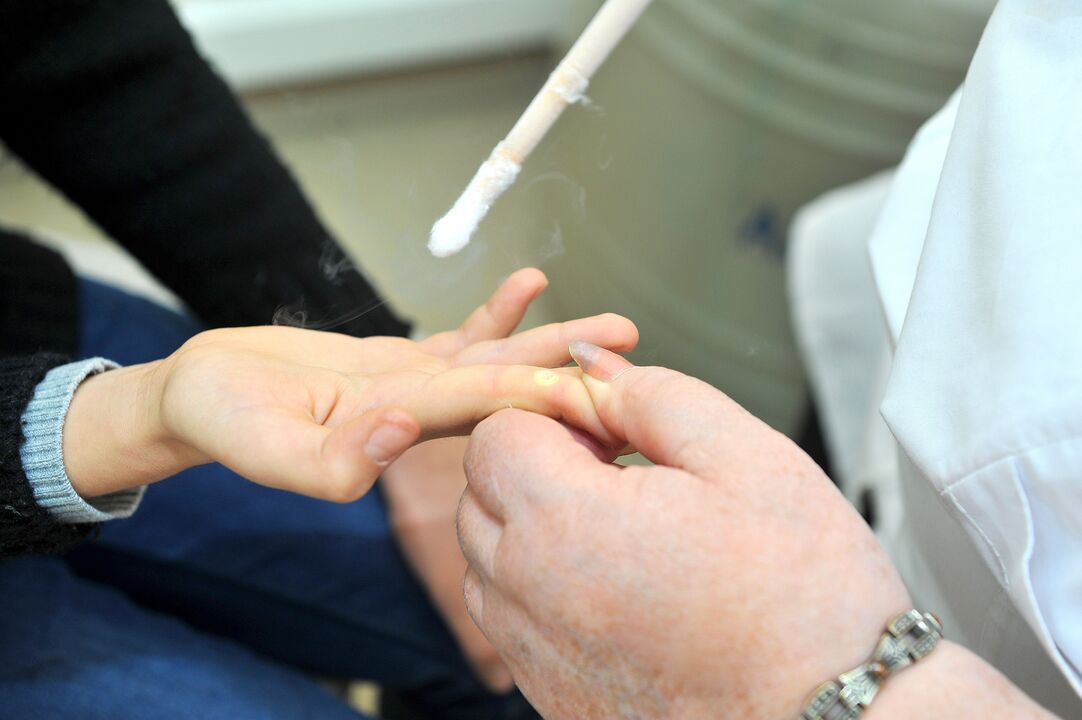In the clinic, you can remove a mole, wart or papilloma of any size. We will examine the skin lesion and choose the appropriate method of removal. If there is a suspicion that the mole or papilloma is malignant, after removal, we will send it for histological examination.
When to remove moles, warts and papillomas
Removal of warts and papillomas is recommended anyway. When it settles in areas that come into contact with clothing, it can cause injury and pain, or simply look unsightly. In addition, some warts and papillomas tend to increase in size.
With the removal of moles, everything is not so simple. If the mole is flat, not damaged and does not change its size and color, it does not need to be removed. For your own convenience, it is better to remove moles on the scalp, in places in contact with clothes and other places that are constantly injured.

If you notice the following symptoms, you should immediately contact a dermatologist:
- the mole grew sharply - several millimeters in diameter in a short time;
- became dark and appeared bright or took on an uneven color;
- blood began to flow;
- changed shape;
- the hairs fell off the mole, even though it had grown before.
All these are possible manifestations of the transformation of a mole into a malignant neoplasm. If they appear, immediately consult a doctor: he will examine the mole under a special microscope - dermatoscope, remove it if necessary, and then send the material for histological examination. This will help to find out whether the mole has actually turned into a tumor and whether further treatment is needed.
Why do warts appear and how do cauterizing agents affect them?
Such skin defects appear due to the action of the papillomavirus, which is present in many people. These types of viruses are transmitted in many ways, including contact and sexual contact. When the human immune system works normally, the infection does not manifest itself in any way, but when the defense is weakened, as well as when the triggering factors appear, warts immediately appear on the skin. Neoplasms look like nodules or plaques, grow over time and merge into colonies.
Factors that cause the formation of papillomas and condylomas are:
- Metabolic disorders.
- Weakening of the immune system.
- Sweating caused by wearing very warm clothes or shoes.
- The presence of other viral diseases.
This plant has been used since ancient times. Its water, as well as tinctures, ointments and oils, were used to fight various skin diseases, because at that time there were no other ways to get rid of these problems. Researchers are at a loss to say why the burning effect of celandine produces such an effect. Some believe that the alkaloids in the juice are to blame. Others agree that the cause is the immune system's reaction to the drug. It works very effectively on warts and removes them.

The fight against warts should be comprehensive and should include not only drugs aimed at eliminating external manifestations, but also drugs to get rid of the virus that causes it. Celandine belongs to the first category.
What warts can be removed using celandine? This remedy is natural and therefore can be used to treat almost any tumor. But there are some exceptions:
- Warts in the intimate area should not be burned, because the skin in these places is very delicate, and the use of this product will cause burns.
- Celandine does not help in the treatment of malignant (oncological) formations.
If you notice that the wart is itchy, crusted, or swollen, be sure to see a doctor before treating it. You probably have a completely different condition unrelated to warts.
Is it necessary to remove papillomas at all?
Small moles that do not protrude above the surface of the body sometimes look very attractive, which, of course, cannot be said about papillomas. They are a source of concern because they grow where the skin is in constant contact with clothing and other parts of the body. Papillomas are often injured: when cracked, any of them can become a source of bleeding. Sometimes, when an infectious agent is added, the papilloma and the surrounding tissues become inflamed, which leads to undesirable consequences.
It is known that the papillomavirus can cause genetic changes in the epithelial cells of the skin when it accumulates in the wart for a long time. With a genetic mutation, cells divide uncontrollably and the affected area of the skin begins to grow. All these factors contribute to the initiation of the oncological process, so it is necessary to get rid of the papilloma as soon as possible. In addition, now there are many modern methods that allow you to do this quickly, painlessly and effectively.
How to remove a wart with celandine
To obtain the active drug, celandine is collected during the flowering period (May, June) in clean places away from roads and industrial enterprises. If you have access to such plants, the best way to remove warts is to burn them with fresh juice 3-5 times a day until the growth disappears.
This removal method is simple and painless. You pick the stem of celandine and the yellow juice immediately appears on the cut. This juice should be applied to the wart steamed in hot water several times a day (to strengthen the effect).
The juice should be applied directly to the wart without falling on healthy skin. The growth will first turn black, then decrease in size, and then disappear completely. This is the best and most effective way.

But you can use celandine tincture or oil from it. This is when warts appear in winter and have no fresh sap. These preparations are prepared in advance in the summer and they should be brewed in a dark place for 2-3 weeks.
This plant is considered a very effective remedy among the people, but there are also contraindications for its use, so you should pay attention to who should not be treated with celandine.
- Individual intolerance.
- During pregnancy.
- Nursing mothers.
- Children up to 5 years old.
- For bronchial asthma.
- For epilepsy.
Why do you need to remove papillomas and warts?
In most cases, benign neoplasms such as papillomas and warts do not directly harm health. Some papillomas can remain on the skin for decades without changing their appearance or increasing in size. However, they pose certain challenges and risks. Thus, a wart on the leg often tends to grow and over time begins to poison life with daily pain when walking. Warts on fingers (often seen in children) or hanging papillomas in skin folds in women can cause soft tissue damage. For example, if papillomas are located on the chest or back, then in the process of constant friction (for example, against a harness or a bra cover), neoplasms can accidentally break off, bleed and become inflamed. Often others begin to appear near a papilloma.
There is a more serious reason for timely removal of tumors. Among the numerous strains of papillomavirus, non-oncogenic, weakly oncogenic and highly oncogenic HPV types are known. The latter are at risk of degeneration: neoplasms that appear due to their fault can change from benign to malignant over time. Skin cancer can be prevented by timely removal of such tumors.
The problem is also that an ordinary person may mistake another, more dangerous neoplasm for a papilloma or a wart, or self-medicate, or simply ignore it. Therefore, with all questions and doubts, it is important to go to a specialist (dermatologist), who will make a diagnosis, determine the origin of the tumors, the degree of danger, and then suggest the optimal treatment methods in this case.
It is not recommended to remove papillomas and warts yourself without first consulting a specialist: this will not only not give the desired effect, but may also aggravate the problem (especially you should not tear or cut the growths).
The cosmetologist's opinion: "Of course, viral warts require timely treatment, otherwise the process can spread significantly throughout the skin and cause infection of people around. As for papillomas, they should be removed to prevent growth, trauma, possible infection, and aesthetic reasons. "
Recovery time after removal of papillomas
Regardless of which surgical method is used for genital warts, a rehabilitation course is carried out after the procedure, during which the patient must follow the following recommendations:
- Avoid proximity;
- Women are not recommended to use vaginal suppositories and tampons;
- Do not shower;
- Do not moisten the postoperative wound during the first 2-3 days;
- Do not scratch the resulting crust and do not subject it to mechanical impact;
- Maintain regular genital hygiene and treat the surgical wound with prescribed medications.
Following these recommendations will reduce the recovery time and prevent negative complications (infection, bleeding, inflammation of the postoperative wound).
You can perform effective and prompt removal of papillomas using any of the available destructive methods in our clinic, where experienced and professional specialists work. The availability of advanced equipment and an individual approach to the patient will be the key to successful and safe treatment of any skin tumors. The cost of the papilloma removal procedure will depend on the specialty of the doctor performing the operation, as well as the location, size and number of condylomas.

Attention! This article is posted for informational purposes only and in no way constitutes scientific material or medical advice and should not replace an individual consultation with a professional physician. Refer to qualified doctors for diagnosis, diagnosis and treatment!


















